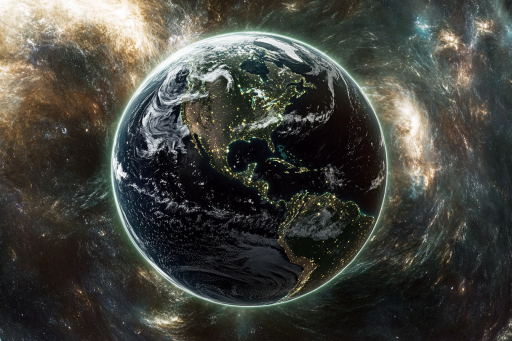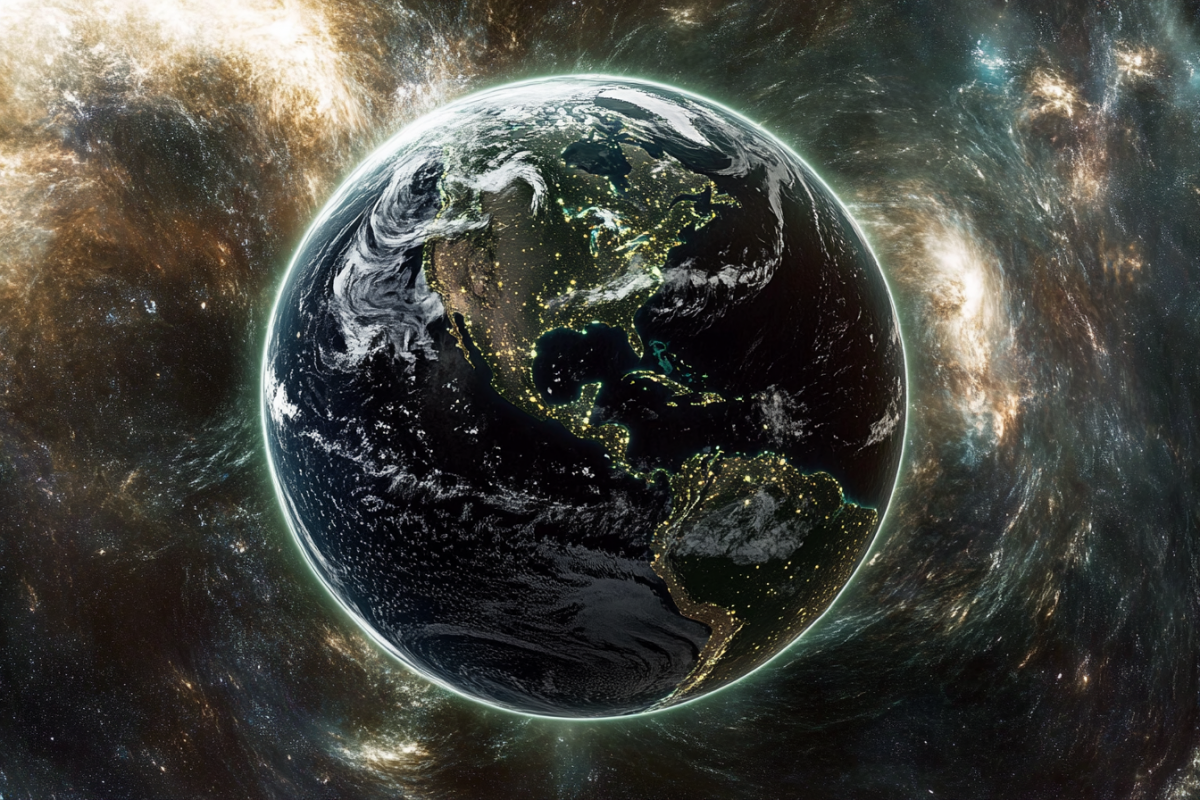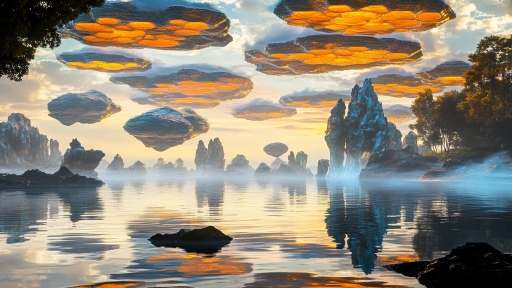
Earth may seem familiar, but beneath its surface and across its vast landscapes lie secrets that defy logic. From bizarre natural phenomena to hidden forces shaping our planet in unexpected ways, Earth is far stranger than most people realize. Science continues to uncover mind-boggling facts that make our world feel more like a work of fiction than reality. The more we explore, the more we realize just how little we truly understand about this extraordinary planet.
A Vast Underground Ocean Hides Beneath Our Feet

Scientists have discovered an enormous reservoir of water deep within Earth’s mantle—trapped in a mineral called ringwoodite. This hidden ocean contains more water than all of Earth’s surface oceans combined, but it exists in a strange, sponge-like state. If released, it could drastically change the planet’s water cycle. This discovery suggests that Earth’s oceans may have originated from deep within the planet rather than from asteroid impacts.
The Planet is Actually Not a Perfect Sphere

Although Earth appears round from space, it’s actually slightly flattened at the poles and bulging at the equator. This shape, known as an oblate spheroid, results from the planet’s rapid rotation. Gravity and centrifugal force work together to create this subtle but significant distortion. If Earth truly were a perfect sphere, ocean tides and weather patterns would behave very differently.
There’s a Colossal “Supervolcano” Under Yellowstone

Beneath Yellowstone National Park lies one of the most powerful volcanoes on the planet. If it were to erupt, it could cover vast regions in ash and impact global climate patterns for years. Fortunately, scientists believe a massive eruption is unlikely anytime soon. Still, this underground giant reminds us that Earth’s geology is more volatile than we often realize.
A Mysterious “Hum” Vibrates the Entire Planet

Even when there are no earthquakes, Earth constantly emits a deep, low-frequency hum. Scientists have detected this strange vibration but are still working to understand its origins. Some theories suggest it’s caused by ocean waves interacting with the seafloor, while others believe it may be linked to the movement of magma beneath Earth’s crust. This planetary heartbeat is a reminder that Earth is never truly still.
The Amazon Rainforest Creates Its Own Weather

The Amazon isn’t just the world’s largest rainforest—it’s also a self-sustaining weather machine. The trees release moisture into the air, generating rain clouds that fuel the entire ecosystem. Without this natural cycle, much of the region would turn into an arid desert. This living, breathing rainforest is a powerful example of nature’s ability to shape its own environment.
The Deepest Part of the Ocean Is Like an Alien World

The Mariana Trench, plunging nearly seven miles deep, is one of the least explored places on Earth. Under immense pressure, life here has evolved in ways that seem otherworldly—giant, translucent creatures, bioluminescent predators, and organisms that thrive in total darkness. Scientists believe studying this extreme environment could offer clues about potential alien life on other planets. In many ways, exploring the deep ocean is just as mysterious as venturing into space.
Lightning Strikes Earth Over 8 Million Times a Day

Every second, hundreds of lightning bolts flash across the planet, with some of the most intense storms occurring over tropical regions. One location in Venezuela, known as Catatumbo, experiences nearly continuous lightning storms for months on end. These electrical storms are powerful enough to help generate ozone in the atmosphere. Despite its destructive force, lightning plays a crucial role in sustaining Earth’s delicate balance.
There’s a Giant, Unexplained “Blob” Beneath Africa

Deep below Africa’s surface lies a massive, mysterious structure buried within Earth’s mantle. This dense “blob” of unknown material influences the planet’s magnetic field and may even contribute to volcanic activity. Scientists are unsure how it formed, but its existence suggests that Earth’s interior is far more complex than we ever imagined. Understanding this anomaly could unlock new secrets about the planet’s inner workings.
Antarctica Was Once a Tropical Paradise

Millions of years ago, Antarctica was covered in lush forests and teeming with prehistoric life. Fossilized plants and animal remains found beneath the ice prove that this frozen continent was once warm and vibrant. This dramatic transformation occurred due to shifting continents and global climate changes over millions of years. Antarctica’s past serves as a stark reminder of how drastically Earth’s environments can evolve.
A “Dead Zone” in the Ocean Can Kill Everything Inside It

Certain areas of the ocean experience oxygen levels so low that almost no life can survive there. These “dead zones” can occur naturally but are increasingly caused by human activity, such as pollution and climate change. Marine life that wanders into these zones suffocates, creating eerie, lifeless seascapes. The growing presence of these zones raises concerns about the health of Earth’s oceans.
The Sahara Desert Used to Be a Lush Green Paradise

Thousands of years ago, the Sahara was covered in lakes, rivers, and grasslands teeming with wildlife. Climate shifts turned this once-thriving region into the vast desert we see today. However, some scientists believe the Sahara could become green again in the distant future. This cycle of transformation shows that even the most extreme landscapes can change over time.
Some Lakes Can Literally Explode

Certain volcanic lakes, like Lake Nyos in Africa, are capable of releasing massive clouds of carbon dioxide in a deadly phenomenon known as a limnic eruption. These sudden gas bursts can suffocate entire villages in minutes. Scientists monitor these lakes carefully to prevent future disasters. This eerie phenomenon is one of Earth’s most unusual and dangerous natural events.
The Earth’s Core is Hotter Than the Surface of the Sun

At its center, Earth’s core reaches temperatures of over 10,000 degrees Fahrenheit—hotter than the surface of the sun. This immense heat is responsible for generating the planet’s magnetic field, which protects us from harmful solar radiation. Without this core activity, Earth’s atmosphere could be stripped away, leaving the planet uninhabitable. The fiery heart of our world is a reminder of the raw power beneath our feet.
Earth’s Secrets Are Still Unfolding

Our planet is far more mysterious than it appears at first glance. Hidden beneath its surface, buried in its past, and scattered across its landscapes are secrets waiting to be uncovered. With every scientific breakthrough, we realize how little we truly know about the world we call home. The greatest surprises may still be out there, waiting to rewrite what we thought we knew about Earth.





